Toronto Condo Investing in 2025: Is Now the Time to Get In?
The Greater Toronto Area (GTA) condo market is experiencing a significant reset in 2025. After several years of rapid growth, this asset class is showing signs of stress—and opportunity—for investors with the right strategy. Let’s examine where prices are falling, how much supply is hitting the market, and how to assess long-term investment returns.
1. Falling Prices: How Deep Is the Downturn?
Toronto condo prices are clearly in correction mode:
In Q1 2025, the average TRREB condo price was C$680,146, down 2.2% compared to Q1 2024’s C$695,555
In early 2025, Bullpen Research found a 10% drop in asking price per square foot in new condos compared to Q3 2022, and resale condo prices in the GTA fell 1.6% year-over-year
TD Economics forecasts a 15–20% total drop from 2023 Q3 peaks by year-end, with about a 10 ppts decline during 2025
This bears out practically: resale sales are down ~12.1% across the GTA and even deeper in downtown Toronto (~14.5%). In May, condo sales plummeted 23% year-over-year, with prices down ~7% and 8 months of inventory on hand.
Bottom line: prices may have started flattening, but considerable downside remains before equilibrium.
2. Rising Supply: A Flood of Listings
Supply has surged:
A record 31,000 new units are expected to complete in 2025, with 90,000 currently in the pipeline.
Q1 2025 saw 9,495 completions, 67% above the 10-year average
At the same time, 69,000 units are actively under construction across the GTA, though new starts dropped 79% YoY
Unsold inventory has doubled from a year ago: nearly 24,000 pre-construction and under-construction units, plus ~1,900 completed units still unsold in Q1
That’s a glut. Many developers are offering incentives—cashback, rental guarantees, longer deposit periods—with asking prices slipping ~2% from last year
So while construction slowed down, completions are peaking—translating to extra supply hitting a market with weak demand.
3. Demand Pressure: Weakening Rental & Buyer Appetite
Investor and renter demand is softening:
TD reports a y/y decline of 5% in average one-bedroom rent in Q4 2024
Moreover, rental market listings surged ~51%, and rental growth was up 25%, signaling vacancy pressures
BMO warns youth unemployment is at recession-like levels (~14.2% as of May), which may be limiting rental growth
Mortgage delinquencies are rising in Toronto, a sign of homeowner/investor strain
A significant portion of condos (~39–50%) in Ontario are investor-owned. Weak rental yields, high borrowing costs, and economic uncertainty are causing many to exit—or pause—investment.
4. Will It Turn Around? Timing & Long‑Term Returns
Near‑Term: Market Likely to Remain Buyer-Friendly
With oversupply and lukewarm demand, the near-term condo market continues to favour buyers. Prices could fall further (5–10% more this year) before stabilizing .
But for those with liquidity and patience, that also means more negotiating power and access to concessions.
Long‑Term: Ride the Cycle & Immigration Potential
Toronto’s fundamentals haven’t vanished. Immigration remains a cornerstone of demand, although slowed recently—it’s still expected to pick up again, bolstering rental absorption later
Many investors pivot to long-term capital appreciation over cash flow. Historically, condo values tend to recover over 5–10 years—though this cycle follow-through is contingent on macroeconomic variables like borrowing rates, trade policy, and employment growth.
Return Metrics: Balanced View
A simple return projection for a well-located condo bought during a downturn:
ElementValue EstimatePurchase discount10–15% below peakLong‑term appreciation3–5% annually (5‑10 yrs)Rental yield (initial)2–3%, with upticks laterCarrying costs (mortgage, repairs, taxes)Moderate–high in short termExit yieldMildly positive over 5–10 yrs
Net ROI depends on holding period and future rate drops. For focused investors, a holding horizon of 7–10 years positions for decent returns once capital appreciation offsets carrying costs.
5. Strategy: Where to Get In & How to Mitigate Risks
1. Pick Quality, Not Quantity.
Focus on condos in high-demand, transit-rich neighbourhoods—Downtown, Midtown, Yonge corridor. These units tend to outperform during recovery.
2. Run Cash Flow Scenarios.
Stress-test your investment. What if mortgage rates stay high and rents decline? Know your negative cash-flow breakeven point.
3. Track Supply Troughs.
The latest completions are coming online in 2025–early 2026—after that, starts have slowed dramatically. Late 2025 and beyond could see supply tapering.
4. Time Financing Smartly.
If refinancing, lock in now—rates may edge lower later in 2025, improving affordability as rental demand normalizes.
5. Use Downcycles as Entry Points.
Historically, these moments have yielded return potential for investors who buy during soft patches and hold through rebounds.
Final Word — Is Now the Time?
Yes, but only for prepared buyers with a long‑term lens. This is not a market for flipping. Prices remain softer, supply is high, and rental dynamics are subdued. However, downturns create opportunity for value investors who seek discounted entry in top locations and can ride through several years of stabilization.
If you’re a seasoned investor with funding in place, buyer tools in hand, and readiness to weather a 5‑10 year cycle—this could be your window. For novices or those needing immediate cash flow, waiting until supply pressures ease and rental growth resumes may be the more prudent path.
By monitoring supply trends, staying agile with financing, and aligning with demographic-driven fundamentals, you can position smartly in Toronto’s 2025 condo landscape. In real estate cycles, courage and preparation often meet opportunity.

